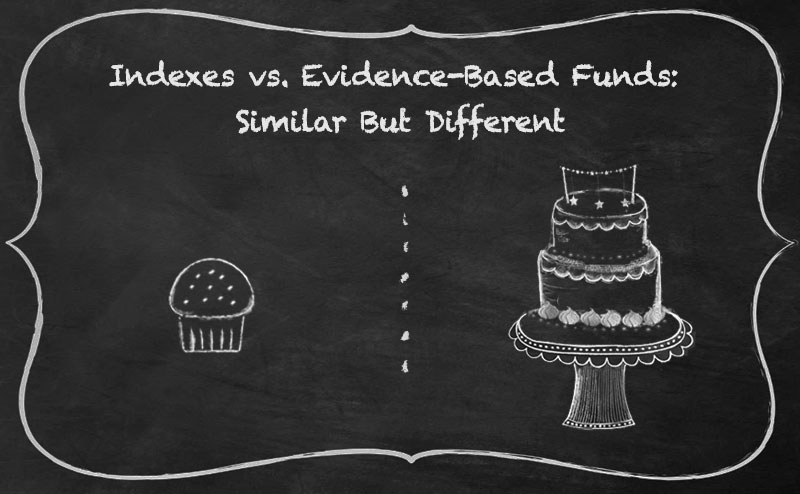
Models vs. Reality, Indexes vs. Investing Part II: A Fund Isn’t an Index (and Why That Matters)
A Fund Isn’t an Index (and Why That Matters)
In our last post, we covered how not all indexes are created equally, which means that results may vary, even when they are supposedly tracking the same market. In today’s post, let’s look at how and why a fund’s performance may deviate from its closest benchmark index.
Indexes vs. Evidence-Based Funds: Similar But Different
Take one more step away from the real-life market, and you’ll find the structured fund families we typically use in our quest to efficiently capture the market’s expected returns, while minimizing the risks involved.
Passively managed index funds deliberately track a particular index as closely as possible. On the plus side, it’s pretty easy to track the performance of an index fund. Generally, its net returns should be the same as those of its benchmark index minus the real-life costs involved (such as trading costs, taxes and fund management fees). Boom, done.
But that simplicity comes at a cost.
Decades of academic inquiry guides us on how to maximize expected returns while minimizing the risks involved by building a globally diversified portfolio, and then tilting it toward sources of expected higher returns. We often turn to fund managers who build their funds to best suit these goals, while remaining mindful of the costs.
The thing is, the more a fund manager prioritizes these evidence-based goals over strictly tracking a popular index, the less its returns will mirror those of its closest benchmark index.
As an example, we believe that the closest benchmark to many of Dimensional Fund Advisors’ domestic core equity funds is the aforementioned Russell 3000® Index. They are similar, but they also exhibit important differences. For example, Dimensional’s funds deliberately exclude utilities and real estate holdings while the Russell 3000® Index does not. Dimensional’s funds also may invest more heavily in small-company value stocks and other sources of higher expected long-term returns. The Russell 3000® Index is more style-neutral. And, as with any other funds, Dimensional’s funds incurs implementation costs that an index does not.
In short, you face a choice. Would you rather be able to most easily compare your investment returns to a popular benchmark? Then index funds may be right for you. Would you rather seek higher expected returns for the level of risk involved, and you don’t mind if your performance numbers stray a bit from the popular benchmarks? Then a customized portfolio built from structured, evidence-based funds might be the preferred strategy for you.
There is no one right answer for everyone, but by understanding the decisions involved, you should be able to better reach the right answer for you. Since it’s your money being invested, that’s the answer that counts.
 SAGE Serendipity: Want to keep up with the conversation? Lately it probably includes the shows you may be watching. In the new hip world of TV (in all forms – Netflix, Hulu, HBO, etc.) this is not easy. Just knowing what’s new takes up too much energy. Here’s a list from The Week: 66 TV shows to watch in 2016. Yes, a list of 66 for this year; need we say more? Pace yourself. Or just pick up a book.
SAGE Serendipity: Want to keep up with the conversation? Lately it probably includes the shows you may be watching. In the new hip world of TV (in all forms – Netflix, Hulu, HBO, etc.) this is not easy. Just knowing what’s new takes up too much energy. Here’s a list from The Week: 66 TV shows to watch in 2016. Yes, a list of 66 for this year; need we say more? Pace yourself. Or just pick up a book.
 Secure Document Sharing
Secure Document Sharing


